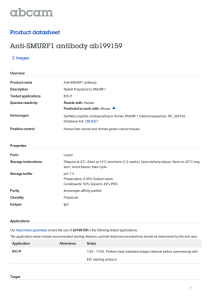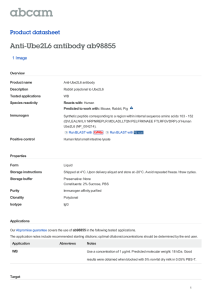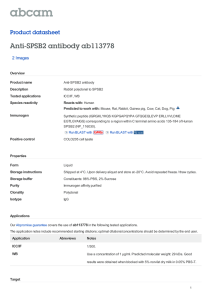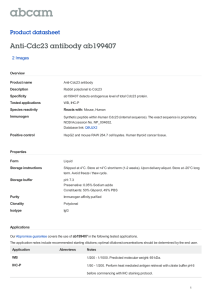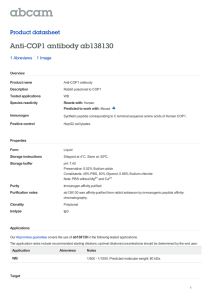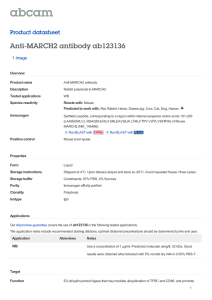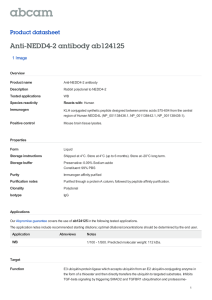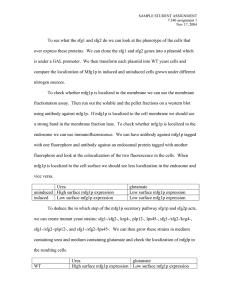Anti-SOCS7 antibody ab13951 Product datasheet 1 References
advertisement
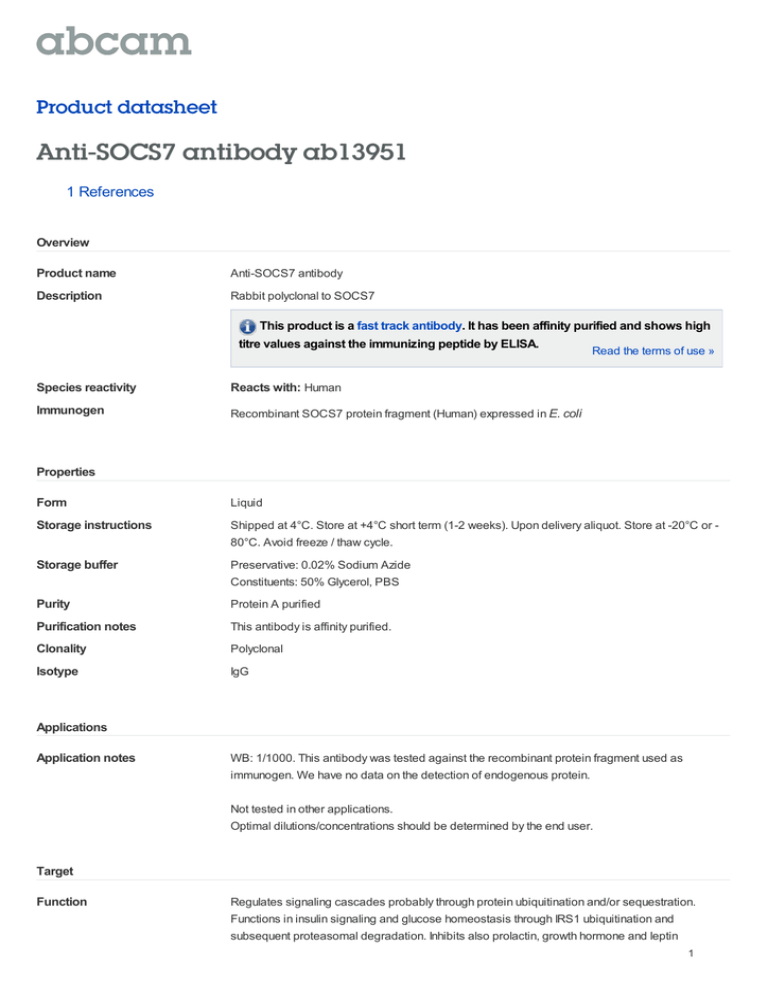
Product datasheet Anti-SOCS7 antibody ab13951 1 References Overview Product name Anti-SOCS7 antibody Description Rabbit polyclonal to SOCS7 This product is a fast track antibody. It has been affinity purified and shows high titre values against the immunizing peptide by ELISA. Read the terms of use » Species reactivity Reacts with: Human Immunogen Recombinant SOCS7 protein fragment (Human) expressed in E. coli Properties Form Liquid Storage instructions Shipped at 4°C. Store at +4°C short term (1-2 weeks). Upon delivery aliquot. Store at -20°C or 80°C. Avoid freeze / thaw cycle. Storage buffer Preservative: 0.02% Sodium Azide Constituents: 50% Glycerol, PBS Purity Protein A purified Purification notes This antibody is affinity purified. Clonality Polyclonal Isotype IgG Applications Application notes WB: 1/1000. This antibody was tested against the recombinant protein fragment used as immunogen. We have no data on the detection of endogenous protein. Not tested in other applications. Optimal dilutions/concentrations should be determined by the end user. Target Function Regulates signaling cascades probably through protein ubiquitination and/or sequestration. Functions in insulin signaling and glucose homeostasis through IRS1 ubiquitination and subsequent proteasomal degradation. Inhibits also prolactin, growth hormone and leptin 1 signaling by preventing STAT3 and STAT5 activation, sequestering them in the cytoplasm and reducing their binding to DNA. May be a substrate recognition component of a SCF-like E3 ubiquitin-protein ligase complex which mediates the ubiquitination and subsequent proteasomal degradation of target proteins. Tissue specificity Expressed in brain and leukocytes. Also in fetal lung fibroblasts and fetal brain. Pathway Protein modification; protein ubiquitination. Sequence similarities Contains 1 SH2 domain. Contains 1 SOCS box domain. Domain The SOCS box domain mediates the interaction with the Elongin BC complex, an adapter module in different E3 ubiquitin ligase complexes (By similarity). It is required for IRS1 ubiquitination and subsequent proteasomal degradation. Cellular localization Cytoplasm. Cell membrane. Nucleus. Mostly cytoplasmic, but shuttles between the cytoplasm and the nucleus. Rapidly relocalizes to the nucleus after UV irradiation. Cytoplasmic location depends upon SEPT7 presence. Please note: All products are "FOR RESEARCH USE ONLY AND ARE NOT INTENDED FOR DIAGNOSTIC OR THERAPEUTIC USE" Terms and conditions Guarantee only valid for products bought direct from Abcam or one of our authorized distributors 2
